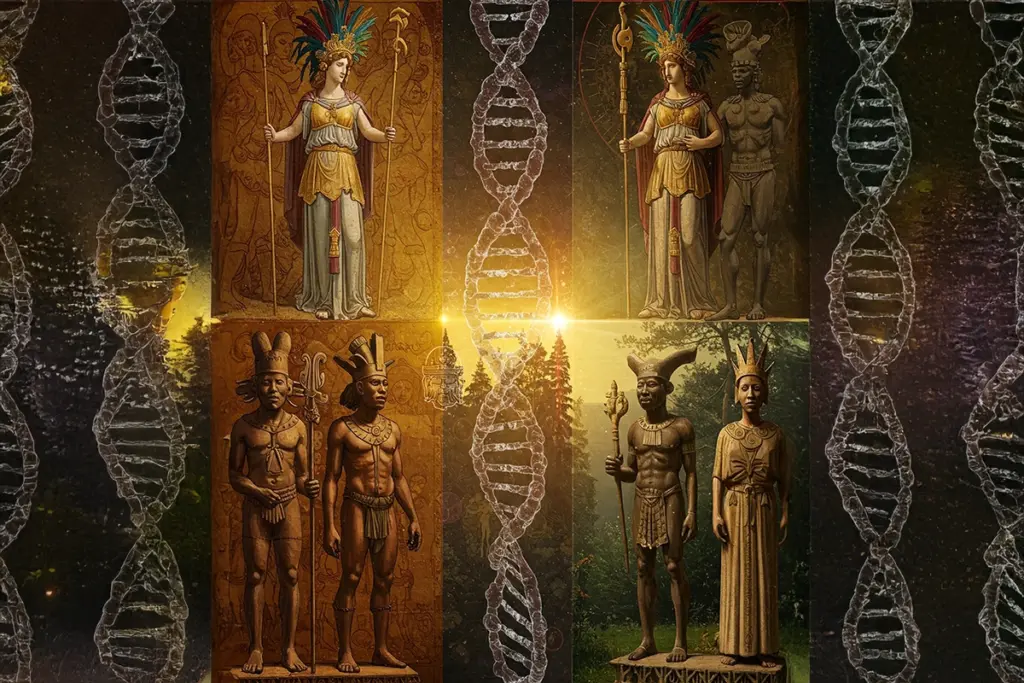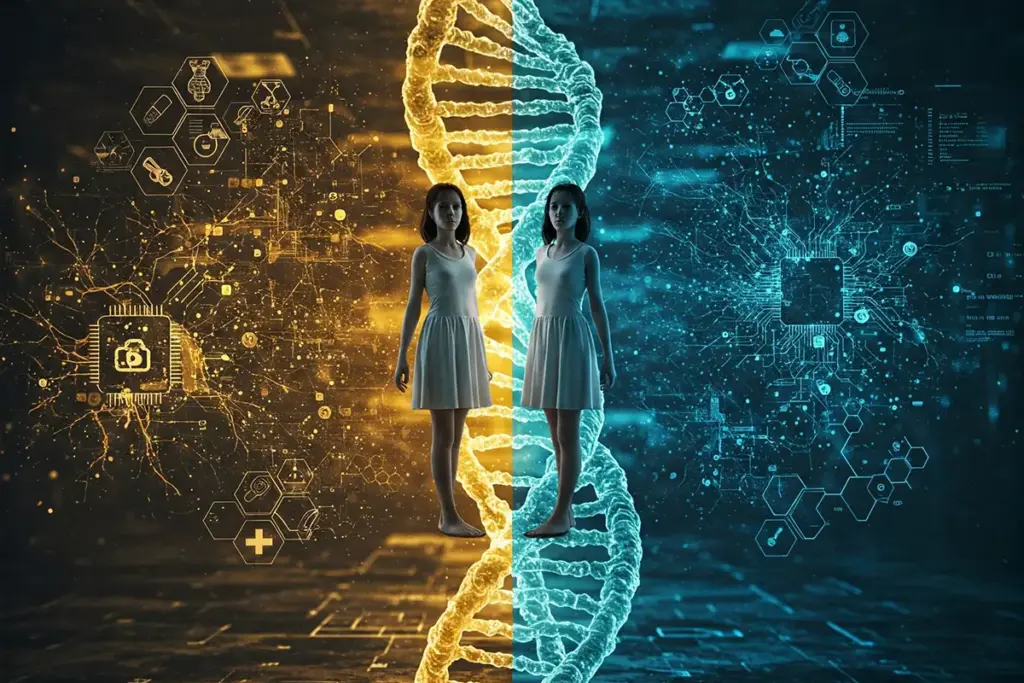Do twins really share a psychic bond? Many parents report eerie moments: one twin crying when the other is hurt miles away, or finishing each other’s sentences. These stories spark curiosity and myths. But what does twin telepathy science actually say?
In this article, you’ll learn:
- What twin telepathy is and isn’t.
- How genetics and environment shape twins’ uncanny connections.
- Why most “psychic” moments have logical explanations.
Let’s separate fact from fiction and explore the real science behind twin bonds.
What Is Twin Telepathy?
Twin telepathy refers to claims that twins can communicate thoughts or feelings without words. Stories range from predicting illnesses to sharing dreams. But science offers a clearer lens to understand these phenomena.
Anecdotal Claims vs. Scientific Reality
First, let’s define the myths:
- Psychic Signals: Some believe twins send “mental messages.”
- Shared Pain: Reports of one twin feeling physical pain when the other is injured.
- Predictive Dreams: Twins dreaming the same events before they happen.
The reality? Most examples stem from:
- Genetic Similarity: Twins often think alike due to identical DNA.
- Close Bonding: Spending years together sharpens nonverbal cues.
- Confirmation Bias: Noticing “hits” (e.g., matching thoughts) more than “misses.”
Why It Captivates Us
Twin telepathy myths persist because they’re fascinating. For example, a mom might swear her twins “read minds” during a game. But studies show these moments often arise from shared habits not magic.
Key Takeaway: Twin connections are special, but they’re rooted in biology, not the supernatural.
What’s Next? Ready to dive deeper? In the next section, we’ll explore the science behind twin bonds from mirror neurons to childhood environments and how they shape those “telepathic” moments.
The Science Behind Twin Bonds
Twin connections aren’t magic, they’re rooted in biology and behavior. Let’s break down three key factors that explain why twins often seem “telepathic.”
1. Genetic Similarity
Identical twins share 100% of their DNA, shaping similar:
- Brain wiring: Matching neural pathways may lead to parallel thoughts.
- Personality traits: Shared extroversion or creativity.
- Health responses: Reacting alike to stress or illness.
Example: Twins often choose similar careers or hobbies, like both becoming musicians.
2. Mirror Neurons
These brain cells fire when we watch others act. In twins, mirror neurons are hyper-tuned from years of observing each other.
Result: Twins may mimic gestures or anticipate actions without thinking.
3. Nonverbal Communication
Growing up together, twins master silent cues like:
- Facial expressions: A glance that says, “Let’s leave.”
- Tone shifts: Detecting stress in a sibling’s voice.
- Routine patterns: Knowing when the other will grab a snack.
Key Takeaway: Twin bonds are deep, but they’re built on science, not superpowers.
4. Studies on Twin Telepathy
What do researchers say about twin telepathy? Let’s explore groundbreaking studies and their limits.
University of Minnesota Twin Study
This landmark research found:
- 75% of twins reported “mind-reading” moments.
- 80% of cases had logical explanations (e.g., shared routines).
Conclusion: Most “telepathy” stems from close bonding, not extrasensory perception.
Edinburgh Twin Registry (2020)
Researchers tested 1,000 twin pairs for psychic links. Results showed:
- No evidence of telepathy under controlled conditions.
- High empathy: Twins guessed each other’s moods better than strangers.
Why it matters: Empathy ≠ telepathy. Twins excel at reading cues they’ve learned over years.
Limitations of Current Research
- Small sample sizes: Few studies include diverse twin groups.
- Anecdotal bias: Researchers struggle to test spontaneous “telepathic” moments.
Key Takeaway: Science explains twin bonds through genetics and environment, not mysticism.
University of Minnesota Twin Study
What’s Next?
Ready to debunk myths? In the next section, we’ll tackle common twin telepathy misconceptions—and give parents tools to celebrate their twins’ bond without the hype.
Debunking Common Twin Telepathy Myths
Let’s tackle three big myths about twin telepathy and replace them with facts.
Myth 1: “Twins Can Read Each Other’s Minds”
- Reality: Twins often think alike due to shared DNA and experiences, not psychic powers. For example, choosing the same meal is about habit, not magic.
- Science: Brain scans show similar neural activity in twins, but this stems from genetics, not telepathy.
Myth 2: “Twins Feel Each Other’s Physical Pain”
- Reality: If one twin feels pain when the other is hurt, it’s likely empathy or stress not a mystical link.
- Science: Mirror neurons fire when watching loved ones in pain, creating a “shared” sensation.
Myth 3: “All Twins Have a Psychic Connection”
- Reality: Only 30% of twins report “telepathic” moments. Closeness varies based on upbringing and personality.
- Science: Bonds depend on time spent together, not just biology.
Key Takeaway: Celebrate your twins’ bond, but skip the supernatural labels.
Real-Life Stories of Twin Connections
Why do twin telepathy stories feel so real? Let’s explore famous anecdotes and what science says.
Story 1: “They Knew I Was in Trouble”
- A mom claims her twins, miles apart, both cried when one fell and scraped his knee.
- Science: Shared routines and empathy explain this not telepathy.
Story 2: “We Finished Each Other’s Sentences”
- Adult twins often joke about “mind-reading” during conversations.
- Science: Decades of shared memories create predictable speech patterns.
Story 3: “They Chose the Same Gift”
- Twins buying identical birthday gifts for a friend shocks parents.
- Science: Similar tastes and parallel thinking make this likely.
Key Takeaway: These moments are special but they’re rooted in love, not magic.
What Parents Should Know
How can you support your twins’ bond without fueling myths? Here’s practical advice grounded in twin telepathy science:
1. Encourage Individuality
- Avoid labels like “the quiet twin” or “the leader.”
- Let them pursue separate hobbies and friendships.
2. Celebrate Their Connection
- Acknowledge their synchronicity (e.g., matching outfits or inside jokes).
- Share stories of famous twins (like the Olsen sisters) to inspire pride.
3. Educate Others
- When asked, “Can they read minds?” reply:
- “They’re just really close!”
- “Science says their bond comes from shared experiences.”
4. Use Science-Backed Resources
- Books: Entwined Lives by Nancy Segal explores twin psychology.
- Apps: TwinZoo tracks milestones and highlights individuality.
Key Takeaway: Twin bonds are special, but they thrive when nurtured with realism, not mysticism.
FAQs
Got questions? Here’s what parents ask most about twin telepathy science.
Is twin telepathy scientifically proven?
No. Studies show twins’ “psychic” moments stem from genetics, shared routines, and empathy not supernatural links.
Can twins feel each other’s pain?
They might feel stress or sadness, but this is empathy, not telepathy. Mirror neurons explain this reaction.
How do I explain twin bonds to others?
Say: “They’re close because they’ve shared everything since birth!” Avoid terms like “mind-reading.”
Are twins emotionally dependent on each other?
Not always. Encourage independence early to build resilience. Learn more in Section 7.
Conclusion
Twin bonds are extraordinary, but they’re not supernatural. Science reveals that “telepathic” moments stem from shared DNA, mirror neurons, and lifelong closeness. While myths about mind-reading persist, parents can celebrate their twins’ unique connection without mystical labels.
Key takeaways:
- Twin synchronicity arises from biology and experience, not magic.
- Encourage individuality while honoring their bond.
- Use science to debunk myths and educate others.
Ready to learn more? Dive into our guide Understanding Twin Psychology or join our community for evidence-based parenting tips.



